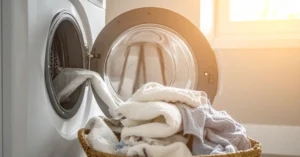If you’re planning a bathroom renovation or dealing with plumbing problems, you might wonder: does a bathtub need a vent? The short answer is yes. Every bathtub in your home needs proper venting to work safely and effectively. This isn’t just a good idea – it’s required by plumbing codes to protect your family’s health and your home’s plumbing system.
What is a Bathtub Vent and Why Do You Need One?
A bathtub vent is a pipe that connects your tub’s drain to the outside air. Think of it like a straw that lets air flow into your plumbing system. When water goes down your bathtub drain, it needs air to replace the space the water used to fill. Without this air, your drain would create a vacuum that could suck the water right out of your trap.
The trap is that curved piece of pipe under your tub that always holds water. This water creates a barrier that stops sewer gases from coming up into your bathroom. According to the International Association of Plumbing and Mechanical Officials (IAPMO), proper venting prevents dangerous sewer gases from entering your home and keeps your plumbing system working correctly.
If you’re experiencing drainage issues or strange odors in your bathroom, you might need professional plumbing repair services to check your venting system.
Plumbing Codes: Why Every Bathtub Must Have a Vent
Both major plumbing codes in the United States make it clear that does a bathtub need a vent – absolutely yes. The International Plumbing Code (IPC) and the Uniform Plumbing Code (UPC) both require venting for all plumbing fixtures, including bathtubs.
Here’s what the codes say about bathtub venting:
Every fixture that has a trap (including your bathtub) must be vented to prevent siphoning of the water seal. The vent must connect above the fixture’s flood level rim and go all the way to the outside air, usually through your roof. This means your bathtub vent can’t just stop in your attic – it needs to go completely outside.
According to professional resources from the American Society of Plumbing Engineers (ASPE), these requirements exist because “if there were no traps in a drainage system, venting would not be required.” But since traps are essential for keeping sewer gases out of your home, venting becomes just as essential.
If you’re dealing with common plumbing problems in San Diego homes, improper venting could be the cause.
How Bathtub Venting Actually Works
Understanding how your bathtub vent works helps you appreciate why the answer to “does a bathtub need a vent” is always yes. When you drain your bathtub, several things happen at once:
First, the water rushes down the drain pipe. As it flows, it pushes air ahead of it and tries to pull air behind it. Without a vent, this creates pressure changes that can cause problems. The water might drain slowly, make gurgling noises, or even push sewer gases back up into your bathroom.
The vent solves this by providing an open path for air to enter the drainage system. Fresh air flows down through the vent while water flows down through the drain. This keeps the pressure balanced and lets everything work smoothly.
Professional resources from Fine Homebuilding magazine explain that proper venting also prevents the dangerous “boundary layer effect.” When water flows past an unvented fixture, it can create pressure changes that suck the water right out of your trap, leaving your home exposed to sewer gases.
For complex venting issues, consider professional camera line inspection services to identify problems in your plumbing system.
Different Types of Bathtub Venting Methods
When plumbers answer “does a bathtub need a vent,” they also need to explain the different venting methods available. Not every bathtub gets vented the same way. Here are the most common options:
Individual Venting
This is the simplest method. Your bathtub gets its own vent pipe that runs straight up to the roof. It’s like giving your tub its own private breathing tube. This method works best when your tub is located near an exterior wall where the vent can easily reach the roof.
Common Venting
Sometimes, two fixtures can share one vent pipe. This might work if your bathtub and sink are located back-to-back or side-by-side. The vent connects at the point where the two drain lines meet, serving both fixtures with one pipe to the roof.
Wet Venting
This is a more complex system where one pipe serves as both a drain and a vent. Your bathroom sink drain might also serve as a vent for your bathtub. According to Hammerpedia’s plumbing guides, wet venting can work well in bathroom groups, but the pipes need to be sized larger to handle both drainage and air flow.
Stack Venting
In this system, fixtures connect directly to the main soil stack, which serves as both the drain and the vent. This works when your bathtub is very close to the main stack and meets specific distance requirements.
If you’re planning a bathroom renovation in San Diego, choosing the right venting method depends on your home’s layout and local code requirements.
Signs Your Bathtub Vent Isn’t Working Properly
Even when homeowners know that “does a bathtub need a vent” has a clear yes answer, they might not recognize when their existing vent isn’t working correctly. Here are warning signs to watch for:
Slow Draining: If your bathtub takes forever to empty, the problem might not be a clog. Poor venting can slow drainage by preventing air from entering the system properly.
Gurgling Sounds: When you hear strange noises from your tub drain or other nearby fixtures, it often means air is struggling to get into the drainage system. The gurgling is air being pulled through water seals in other traps.
Bad Smells: Sewer odors in your bathroom usually mean sewer gases are escaping somewhere. This could happen if your vent is blocked or if the water seal in your trap has been sucked out due to poor venting.
Water Level Changes: If you notice the water level in your toilet bowl dropping or other fixtures acting strangely when you drain your tub, venting problems are creating pressure imbalances throughout your plumbing system.
These symptoms often get worse during heavy rain when roof vents can become blocked by debris or weather conditions.
For persistent drainage issues, consider professional drain cleaning services to address both blockages and venting problems.
Proper Vent Sizing and Installation Requirements
Understanding the technical requirements helps explain why does a bathtub need a vent of the right size. According to both IPC and UPC codes, vent sizing depends on the fixture it serves and the distance it travels.
For most bathtubs, a 1.5-inch or 2-inch vent pipe works well. The International Code Council specifies that the vent must be at least as large as half the diameter of the drain it serves, but never smaller than 1.25 inches.
Distance matters too. The vent connection must be within 6 feet of the trap for most installations. If you need a longer run, the vent pipe might need to be larger to maintain proper air flow.
Installation requirements include:
Height: Vents must extend at least 6 inches above your roof line and must be positioned away from windows, air intakes, and other openings.
Slope: Horizontal vent pipes should slope back toward the fixture they serve so any moisture drains properly instead of collecting in the pipes.
Protection: In cold climates, vents might need insulation or heat protection to prevent freezing.
Professional installation ensures compliance with local codes and proper function. Consider professional plumbing services for vent installation or repairs.
Special Considerations for San Diego Homes
San Diego’s unique climate and housing styles create special considerations when addressing “does a bathtub need a vent” for local homeowners. Our mild weather means freezing isn’t a concern, but other factors matter.
Many San Diego homes were built before modern venting requirements. Older homes might have inadequate venting that worked okay for years but creates problems as plumbing systems age. Clay tile roofs, popular in San Diego, require careful vent installation to prevent leaks.
Coastal areas deal with salt air that can corrode vent pipes over time. Regular inspection helps catch problems before they become serious. Our hard water can also create mineral buildup that affects vent function.
For homes in hillside areas or unusual lot configurations, vent routing might require creative solutions. Professional plumbers understand local challenges and code variations that affect vent installation.
Regular maintenance appropriate for San Diego’s climate helps keep your venting system working properly year-round.
When to Call Professional Help
While understanding “does a bathtub need a vent” helps you identify problems, most venting work requires professional expertise. Plumbing codes are complex, and mistakes can create dangerous situations or expensive repairs later.
Call a professional plumber when you experience:
Persistent drainage problems that cleaning doesn’t solve. Multiple fixtures showing symptoms at the same time. Strange odors that suggest sewer gas problems. Gurgling sounds from multiple drains. Planning any bathroom renovation or addition.
Professional plumbers have tools to diagnose venting problems accurately. They can use camera inspections to see inside pipes, smoke tests to find vent blockages, and pressure tests to check system integrity.
For emergency situations involving sewer gas odors or complete drainage failure, contact emergency plumbing services immediately.
Preventive Maintenance for Your Bathtub Vent System
Once you understand that does a bathtub need a vent, maintaining that vent system becomes important for long-term performance. Simple maintenance steps can prevent most venting problems.
Check your roof vents seasonally for blockages. Birds, leaves, and debris can block vent openings, especially after storms. Install vent caps designed to keep debris out while allowing air flow.
Listen for warning signs during normal use. Any changes in drainage speed or unusual sounds deserve attention before they become bigger problems.
Keep drain lines clean to prevent blockages that can affect vent function. Professional drain cleaning methods work better than chemical solutions and won’t damage your pipes.
Consider enrolling in The Solid Care Plan for regular maintenance that includes vent system inspection and cleaning.
Understanding proper venting helps you make informed decisions about bathroom projects and maintenance. When problems arise, professional help ensures safe, code-compliant solutions that protect your home and family.
For expert plumbing services throughout San Diego County, contact Solid Plumbing & Drains. Our experienced team handles everything from routine maintenance to complete bathroom renovations, ensuring your plumbing systems work safely and efficiently.



